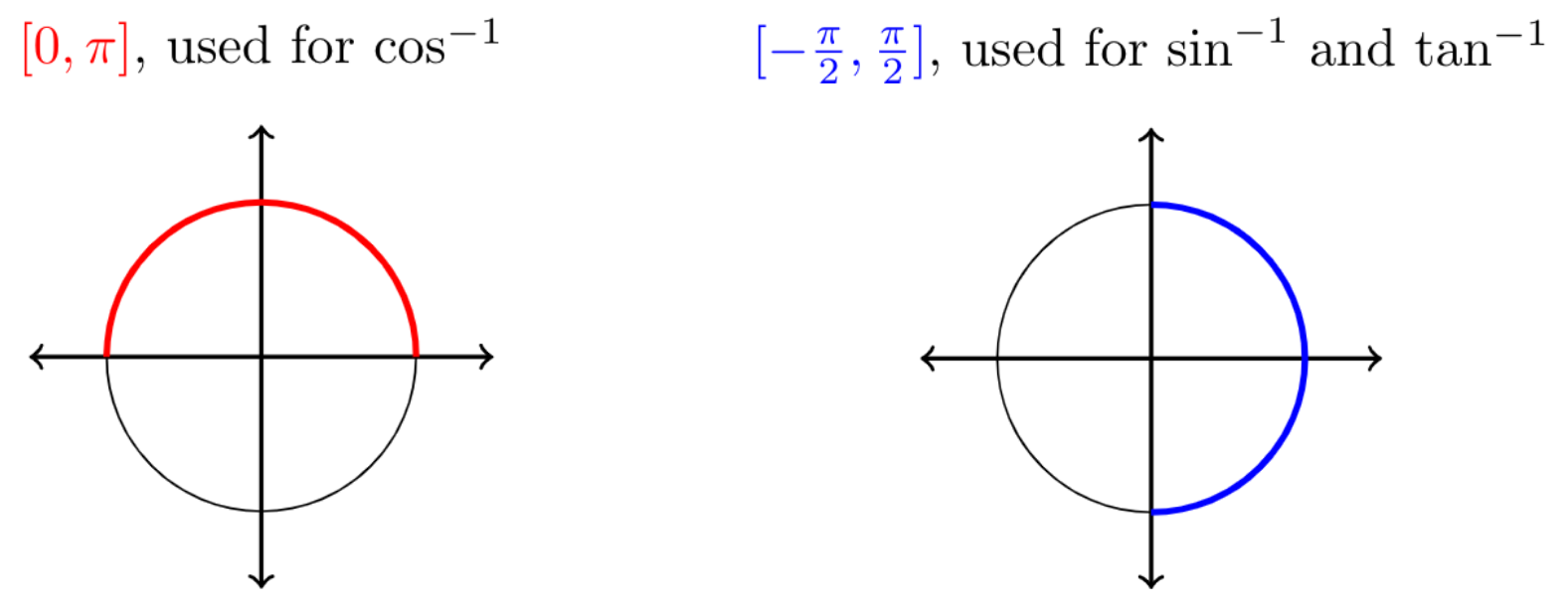§3.2 | Sum, Difference, and Cofunction Identities
§3.3 | Double- and Half-Angle Identities
-
Remember for Exams. The professor said this isn’t given during the Exam, and that we need to know this, said this in the context of Double-Angle & Half-Angle Identities.
-
The Double-Angle Identities are easy to derive from the Sum and Difference Identities.
Remember for Exams. The professor said this isn’t given during the Exam, and that we need to know this, said this in the context of Double-Angle & Half-Angle Identities, she may have been talking about just the Double-Angle Identities.
|
Warning
|
The choice of the ± sign depends on the quadrant in which \(\frac{\alpha}{2}\) lies. |
§3.4 | Identities Involving the Sum of Trigonometric Functions
§3.5 | Inverse Trigonometric Functions

if and only if
where
The graph of \(y=\sin\;x\) with \(x\) restricted to to \(\left\lbrack -\frac{\tau}{4},\frac{\tau}{4} \right\rbrack\):
if and only if
where
The graph of \(y=\cos\;x\) with \(x\) restricted to to \(\left\lbrack 0,\frac{1}{2}\tau \right\rbrack\):
|
Warning
|
The choice of ranges for \(\arcsin(x)\) and \(\arccos(x)\) is not universally accepted. |
-
Where \(x \in \mathbf{R}\) means if x is any real number.